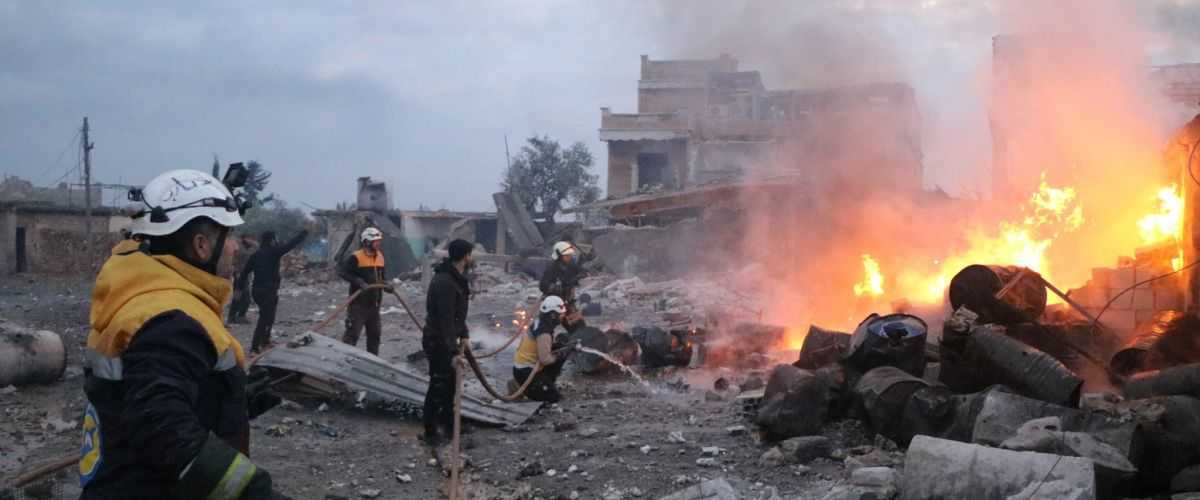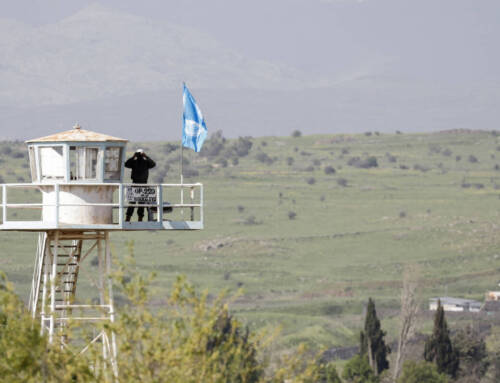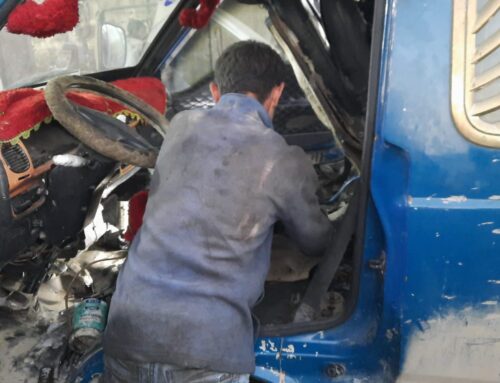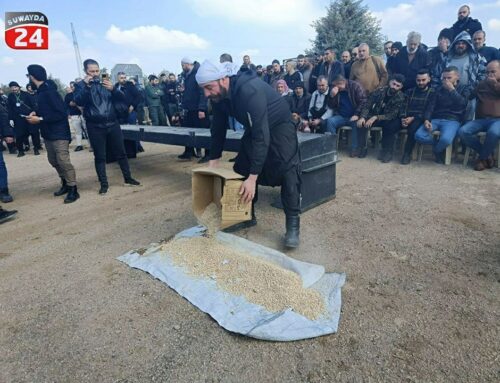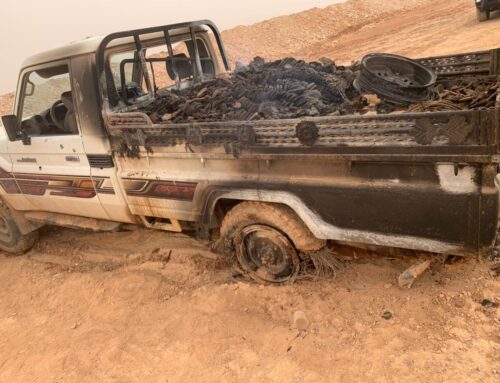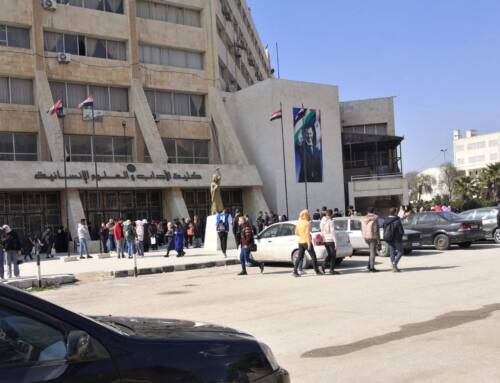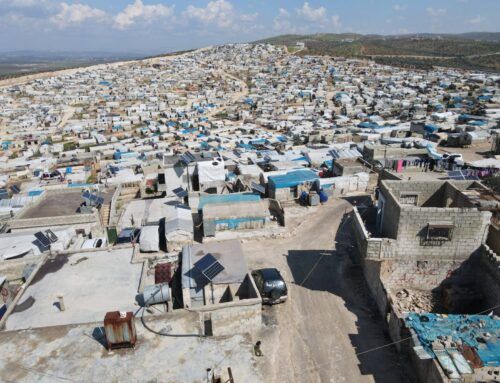Ceasefire violations and scores dead: Will northwest Syria suffer the same fate as Ghouta?
In just ten days, the assault by Syrian government forces on northwest Syria has left 94 dead and 178 wounded.
26 January 2020
Syrian Civil Defense (White Helmets) volunteers rescue people from under rubble in the town of Kafr Nouran in the western countryside of Aleppo, 21/01/2020 (Syrian Civil Defense)
AMMAN — In just ten days, the assault by Syrian government forces on northwest Syria has left 94 dead–including 32 children, six women, and one volunteer from the Syrian Civil Defense (also known as the White Helmets)– and 178 wounded.
Neither the Syrian government nor Russia has abided by the ceasefire established between Ankara and Moscow on January 9, 2020. “The bombing has not stopped since the first day of the ceasefire went into effect,” Ahmad al-Shiekho, the director of the Idlib branch of the White Helmets, told Syria Direct. Instead, since January 16, the shelling has intensified and expanded to include the western countryside of Aleppo.
In the last ten days, 48 civilians have been killed and 93 have been injured in the countryside of Aleppo alone, according to Ibrahim al-Hallaj, an employee of the Aleppo branch of the White Helmets. “Last Tuesday [January 21] was the bloodiest day since the beginning of the so-called Russian truce; 26 civilians were killed [that day],” he told Syria Direct.
The Britain-based Syrian Observatory for Human Rights (SOHR) documented more than 4,755 strikes on the western and southern countryside of Aleppo and the eastern countryside of Idlib between January 15 and 23.
Renewed displacement
In 2019, around 1.3 million people were displaced within Idlib province as a result of Damascus and Moscow’s joint-military campaign on the area. The massive influx of Internally Displaced Persons (IDPs), totaling 28% of Idlib’s population, has overwhelmed the capacity of humanitarian organizations working in the area.
Since Damascus violated the latest ceasefire, 98,616 civilians have been displaced, most of whom fled towards the villages and IDP camps close to the Turkish border, Muhammad Hallaj, the director of Response Coordination Group, told Syria Direct. The group is unable to meet the housing needs for the majority of the displaced, 73% of which are women and children, and cannot give any form of food assistance to 91% of IDPs in the area, according to Hallaj.
“We don’t know if we’ll stay in one place or have to flee again,” Muhammad Bakoor, an IDP from the town of Kafr Taal in the countryside of western Aleppo, told Syria Direct. “The regime and Russia want to kill as many civilians as they can as a response to their failure to control the area,” Bakoor added.
Bakoor arrived in Idlib with his four children and parents on January 17, marking the fifth time he has been displaced since the beginning of the Syrian conflict. His wife had been killed in an airstrike a year and a half ago in the town of Darat Izza in the western countryside of Aleppo.
A repeat of Ghouta in Idlib?
Government forces and opposition factions are colliding violently in Idlib and western Aleppo province, as the latter seeks to repel Damascus’ fierce ground offensive while the former tries to reclaim the last pocket of opposition in the country.
On January 25, the Syrian official news agency, SANA, announced that government forces seized control of the towns of Ma’ar Shimmareen, Tqana, Talmenes and Ma’ar Shamshah in southeast Idlib. However, opposition leaders claim that they successfully stopped the government assault on western Aleppo.
“Syrian revolutionary factions repelled the regime’s pathetic attempts and returned [the balance of power] in the countryside of Aleppo to how it was before the enemy [government forces] advanced on the three [towns] and took control of them,” Mustafa al-Ma’arati, a leader in the fifth division of the Turkish-backed opposition coalition, the National Front for Liberation, told Syria Direct.
Nonetheless, al-Mar’arati confirmed that Russian special forces were able to enter the town of al-Ghadfa with the assistance of thermal technologies and that Damascus seized control of it after an intense barrage of artillery, missile and Russian aerial strikes. “Nothing stands between the regime and the [M4] international highway, except the town of Ma’ar Shoreen,” he said.
Reaching the M4 and M5 international highways has been a key goal for Moscow and Damascus since the September 2018 “de-escalation” agreement was reached between Ankara and Moscow. The deal created a 15-20 kilometer buffer zone between government and opposition forces in northwest Syria and would have allowed trade to resume along the two highways, secured by joint Turkish-Russian patrols.
Moscow exploited the negotiation process with Ankara to make military gains on the ground, as each ceasefire negotiated would be broken by a new military operation in the northwest. Damascus’ violation of the ceasefire in western Aleppo followed a similar pattern to the sequence of events in the southern Idlib countryside in the fall of 2019. Damascus broke the August 2019 ceasefire and immediately launched an assault on the province and seized control of several cities and towns in the northern Hama countryside.
General Ahmad al-Rahhal told Syria Direct that the collapse of the latest ceasefire and the subsequent military buildup on the Aleppo front points to a “Russian attempt to cut off the Aleppo countryside and Idlib from one another.”
“Russia used this technique in East Ghouta to weaken the revolutionary [fighters] first, then to divide Ghouta into two parts, each part isolated from the other,” al-Rahhal said. At the same time, he warned that this technique in northwest Syria might “weaken the coordination between factions, fragment the leadership and create two decision-making processes among the opposition groups, which will [negatively] affect the revolutionary factions and their military capacities.”
The future of the Russian-Turkish agreement
In a press conference on Sunday, January 19, Turkish President Recep Tayyib Erdoğan, said that “the [Syrian] regime continues to violate the agreement with regards to Idlib,” reiterating his country’s commitment to protecting Syrian civilians from government bombing by intensifying meetings with Russian officials.
However, on January 21, Turkey’s Minister of Foreign Affairs, Mevlüt Çavuşoğlu, stated that “the [Syrian] opposition must protect itself from [Syrian] regime attacks.” Moreover, the absence of Turkish statements against government advances “may be a green light for Damascus to proceed,” according to Taha Abdul Wahed, a researcher who focuses on Russia.
Abdul Wahed explained the current developments on the ground as “the exchanging of control over areas between Putin and Erdoğan. First, Turkey paves the way for the [Syrian] regime to take control of areas that border international roads. Second, Turkey creates cities for displaced people that would form a security belt for [Turkey] along the Syrian border.”
Further, Abdul Wahed fears that political negotiations between Moscow and Ankara in Libya, in addition to growing tensions between the US and Russia in eastern Euphrates, may threaten the future of negotiations in northwestern Syria.
Mustafa Saijari, the head of the Political Bureau of the al-Mu’tasim Brigade, a group affiliated with the Turkish-backed Syrian National Army, agreed that developments in Libya are affecting Russian and Turkish strategies in Syria. Since “controlling all Syrian geography is the Russian strategy in Syria, the current escalation is caused by stalled negotiations between Turkey and Russia and disagreements in Libya,” he told Syria Direct.
He added that “Russia linked the Idlib file with the Libyan file, and is using [the former] to put pressure on Ankara.” Thus, the “escalation in the Aleppo countryside is a way to strengthen their negotiating position in Libya.”
While Sijiri stressed that “Turkey will not abandon its obligations toward [Syria’s] people,” he expressed a belief that “the US has the final word [in northwestern Syria] and we are doing our best to have their position on our side.”
This report was originally published in Arabic and translated into English by Will Christou and Rohan Advani.
This article reflects changes made on 29/01/2020 at 1:07 pm.

